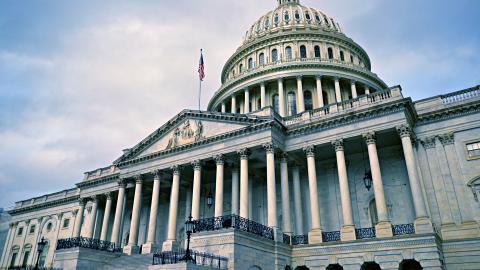Regulation magazine was founded in 1977, at an inflection point in the growth of regulation. In the early 1970s, Congress launched a fleet of new agencies such as the Environmental Protection Agency, Occupational Safety and Health Administration, and National Highway Traffic Safety Administration. They were fundamentally unlike the New Deal and progressive “independent commissions” that managed industrial cartels—two of which, the Civil Aeronautics Board and Interstate Commerce Commission, would soon be dismantled. The new ones were missionary rather than managerial, pursuing causes of significant interest to many citizens. Most were headed by a single official reporting to the president. And they made policy by “informal rulemaking” rather than case‐by‐case adjudication. The procedure, essentially unknown before 1970, enabled agencies to issue sweeping, prescriptive, industry‐wide requirements costing hundreds of millions of dollars—and they were doing so routinely by 1977.
Those of us who were present at that creation knew something big was afoot, demanding a commensurate response. Our “regulatory reform movement” would sort out the good, bad, and ugly in the growing maze of government interventions. We wished to be done with price and entry controls in competitive markets. Where regulatory purposes were worthy or at least plausible, we would direct agencies away from “command and control,” toward balancing benefits and costs and working with, rather than against, private economic incentives. A serious reform movement would require something other than railing against populist legislators and unaccountable bureaucrats; we would need to address “policymakers” as partners rather than adversaries and translate economic ideas from academese into clear, accessible arguments.
I was at the Harvard Kennedy School at the time, teaching and directing a faculty program on regulatory reform. I was thrilled by the American Enterprise Institute’s inauguration of Regulation—addressed to those proliferating policymakers and to students, journalists, and general readers. It was strongly free‐market, but empirical rather than doctrinaire; lucid in explaining abstruse legal doctrines and political theories; and intent on bringing out the common sense in economic reasoning. In 1979, I submitted a paper assessing the Carter administration’s rulemaking reform efforts and weighing two ideas for building on them: cost–benefit analysis of individual rules versus a regulatory budget capping total regulatory costs.
Soon I received a telephone call from one of Regulation’s co‐editors, Antonin Scalia, then a professor at the University of Chicago Law School. We were both veterans of regulatory politics in the Nixon White House: I had chaired a task force on environmental policy that established the EPA and crafted administration positions on the Clean Air Act and other legislation, while he had been general counsel of an Office of Telecommunications Policy that succeeded against all odds in denationalizing satellite communications. But we didn’t swap war stories or talk politics of any kind. He was interested in my paper but had a long list of sharp comments and queries, beginning with my clunky first paragraph. We bore down intently for more than an hour and ended up satisfied that we had a Regulation-worthy article (published in two parts in 1980).
Regulation in its early years was the preeminent voice of the regulatory reform movement. It developed a style, sensibility, and range of interests that would influence many journals and research centers to come. Justice‐to‐be Scalia, co‐editor Murray Weidenbaum, and managing editor Anne Brunsdale would all go on to distinguished service in government. Associate editors Peter Huber and Walter Olson were wunderkinds headed for pathbreaking careers as authors and reformers. Its pages featured too many outstanding thinkers and scholars to mention (I tried, but the list got too long and I gave up). Regulatory reform was bipartisan in those days, and many prominent liberals as well as conservatives and libertarians wrote for Regulation. All concerned trained their considerable academic learning on current developments in Congress, the agencies, the courts, and the states, and on expounding the stakes for limited government, ordered liberty, and economic prosperity.
In 1986, AEI fell into financial and intellectual turmoil and decided to discontinue Regulation. Working down the block as a law‐and‐economics consultant at Lexecon, I was dismayed at the news and determined to keep the journal going as an independent publication. I agreed to take on AEI’s unfulfilled subscription obligations in exchange for Regulation’s tradename, files, and subscription lists (a barter transaction that probably violated a regulation somewhere). I rounded up a few foundation grants and persuaded two extraordinarily talented people to join me in the adventure—from the Hoover Institution, public‐choice economist Carolyn Weaver as editor, and from Forbes, business journalist Robert H. Bork Jr. as managing editor.
At the end of that year, AEI’s trustees—no doubt suitably impressed by my gumption in rescuing Regulation—hired me to be the institute’s president and try my hand at rescuing AEI itself. Regulation came with me, with Carolyn continuing as its editor (and my first appointment of an AEI resident scholar). Brian F. Mannix, who had designed the landmark marketable permits program for the Reagan administration’s gasoline lead‐phasedown program and would go on to a senior position at the EPA and to brilliant academic research, was managing editor.
But the arrangement lasted only two years. Carolyn in her spare time had become a perspicacious analyst and critic of the Social Security program and wanted to go all‐in with a research project of her own. AEI was publishing four periodicals, and I consolidated their topics into a single magazine, The American Enterprise (1990–2008). The transfer of Regulation to the Cato Institute was a natural step, consummated in a pleasant conversation and handshake with Cato founder and president Ed Crane. Neither the Justice Department’s Antitrust Division nor the Federal Trade Commission opposed the transaction, despite Cato’s dominant market share in libertarian policy research. Ed didn’t want my advice but, if he had, I would have strongly recommended William Niskanen for Regulation’s new editor. Ed reached that Conclusion on his own.
Regulation’s distinctive style—earnest argument addressed to readers of all persuasions—and editorial posture—apprehensive but persuadable about the handiwork of legislatures, bureaucracies, and courts—have been remarkably consistent across institutional homes and editors. Three of its early stars during the AEI period, Bruce Yandle, David R. Henderson, and Thomas M. Lenard, continue to write for it today. Peter Van Doren has expanded and improved one of my favorite original features—crisp, critical summaries of the latest academic research. But the greatest consistency, issue after issue, has been rigorous, matter‐of‐fact analysis of the failures of regulatory programs and other efforts to substitute government and politics for private ordering.
That consistency is not, I believe, a result of editorial bias: Regulation has been equally alert to regulatory successes large and small, including marginal improvements and second‐best approaches within politically entrenched programs. The reason, rather, is that failure is endemic to regulation: “a feature, not a bug.” Regulatory programs may fail to achieve their declared purposes because those purposes are utopian and unachievable, or serve as cover for underhanded purposes that they do achieve sub silentio, or else are perverted over time by interest‐group machinations. Or they may succeed at extravagant cost, absorbing resources that would have achieved much more if spent responsibly. Or they may make matters worse because they prompt compensating behavioral responses (the “Peltzman Effect,” named for a Regulation stalwart) as firms and individuals work around rules in pursuit of their own purposes. In these cases, Regulation’s editorial consistency is the result of regulation’s programmatic consistency.
After 45 years of this, one must ask whether the policymakers have been paying attention. My answer is that they have. I share the view set forth by George J. Stigler in an early issue (“Economists and Public Policy,” May/June 1982). He argued that society and its public officials are bound to absorb and make use of practical knowledge “that survived the empirical tests,” and that economists should “listen to the society” rather than complain that the society isn’t listening to them. From personal experience and from reading Regulation and other publications, I would say that the federal and state regulatory establishments have become more sophisticated and proficient than they used to be, more cognizant of regulation’s characteristic failings, and less prone to making outright mistakes in pursuing their declared or surreptitious purposes. One result is the marginal improvements mentioned above. Another is the Supreme Court’s baby steps toward reforming its nonchalant “congressional nondelegation” and “agency deference” doctrines.
But smarter regulation, where it has occurred, has been overwhelmed by the emergence of a rampant “regulatory state” that could hardly have been imagined in the 1970s. In the 21st century, and especially since the financial crisis of 2008, federal regulation has become vastly more extensive and invasive, and unhinged from economic, political, or constitutional constraint. It has also become increasingly partisan and, in the Biden administration, unabashedly ideological on behalf of “woke” progressivism. Cost–benefit analysis has been transformed from a decision‐making tool into a public relations technique for advertising, say, the stupendous consumer benefits of energy‐efficient dishwashers. Presidents make major national policy decisions on their own, with little or no basis in legislation. Regulatory surveillance has gone from paperwork and reporting requirements to real‐time visual monitoring and activist compliance bureaucracies embedded in corporations, hospitals, and universities.
These developments amount to a new and ominous inflection point in the growth of government regulation. They are the result not of insufficient academic analysis but of profound changes in technology, culture, and economic organization. Understanding them and finding ways to vindicate limited government, separated powers, and due process of law in modern times are Regulation’s high calling for its next 45 years. In the meantime, the journal’s first 189 issues constitute an impressive literature—and it really does deserve to be called literature—of the peregrinations of American government, business, law, and society during a momentous era. All concerned should be satisfied that that is a considerable achievement in its own right.

















